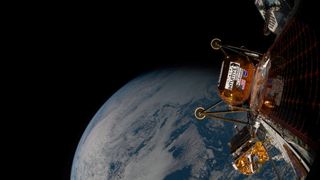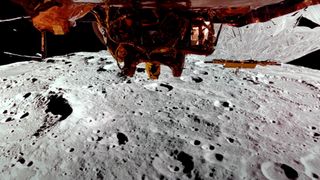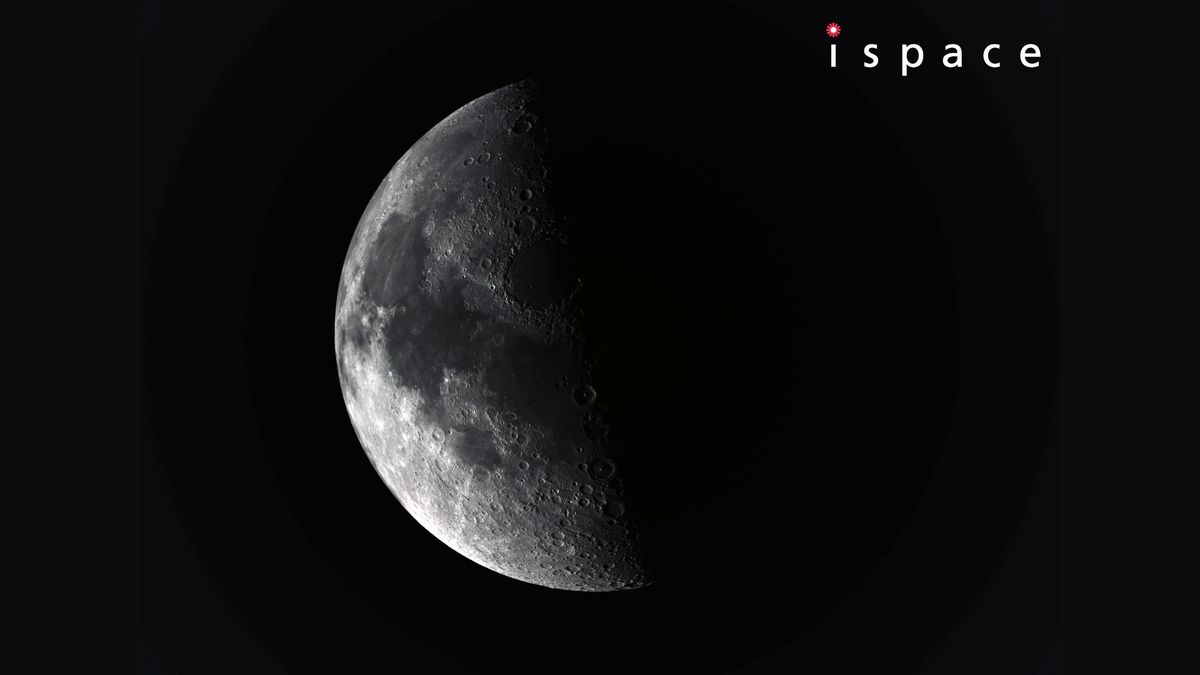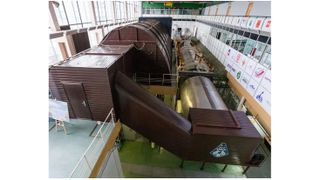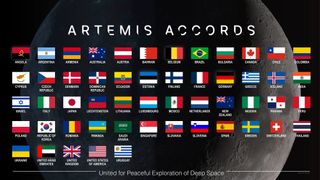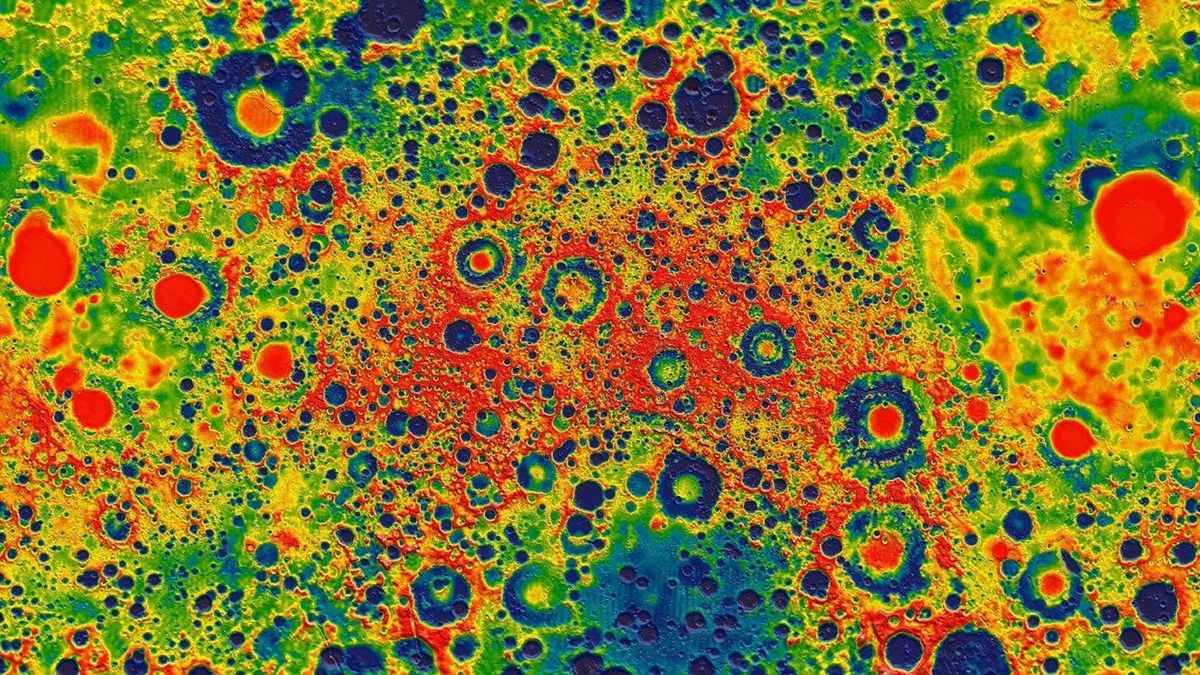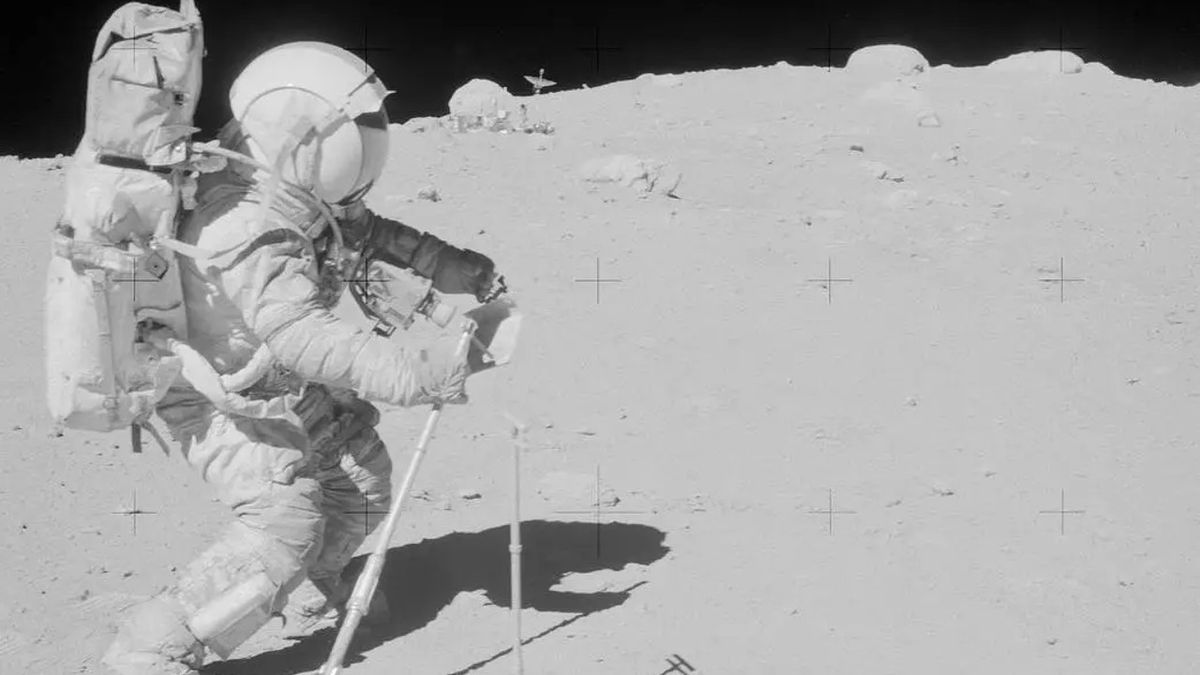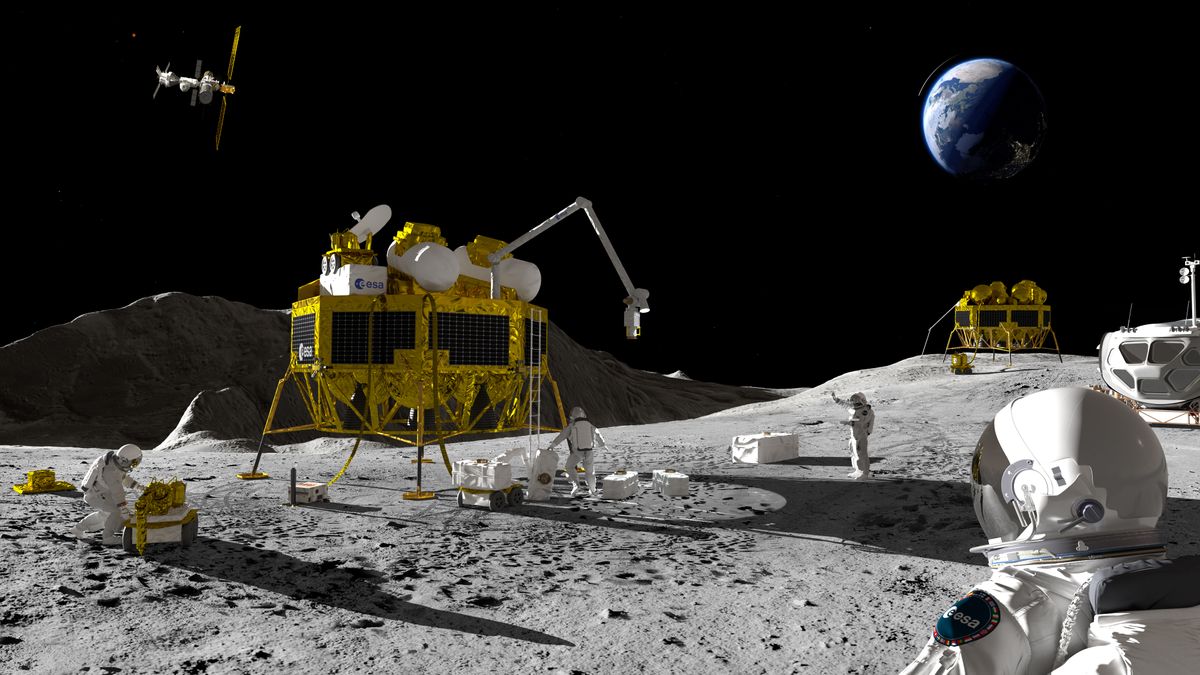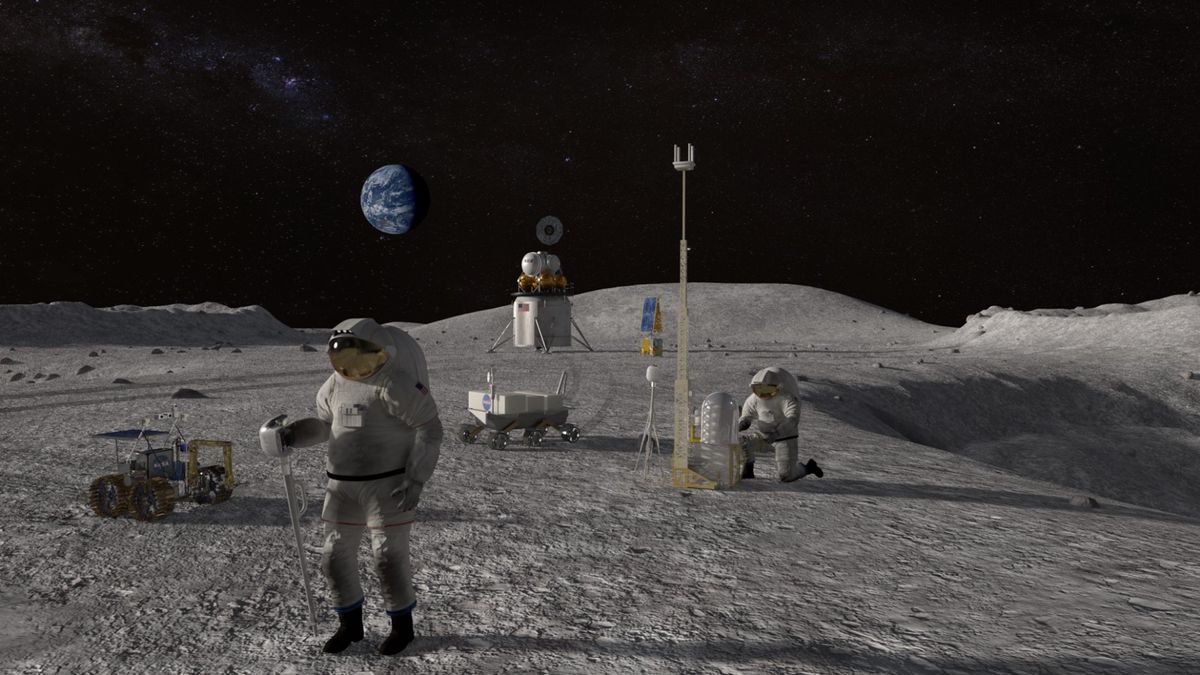A newly launched lunar lander just captured some stunning shots of its home planet. Athena, the second moon lander from Houston-based company Intuitive Machines, launched atop a SpaceX Falcon 9 rocket from Florida’s Space Coast on Wednesday evening (Feb. 26). Shortly after deploying into the final frontier, Athena snapped a few selfies with Earth in the background, including one that shows the Falcon 9‘s upper stage drifting in the void beneath the lander. (Bright specks visible near the rocket stage may be some of the other payloads that launched with…
Read MoreTag: The moon
Private Blue Ghost lander sees far side of the moon in breathtaking detail ahead of lunar landing (video)
Firefly Aerospace’s Blue Ghost lunar lander is sharing some amazing views from just above the moon. Blue Ghost beamed home gorgeous, up-close shots of the moon‘s far side on Feb. 24, just after lowering its orbit ahead of a Sunday morning (March 2) landing attempt. “That feeling you get when you look out the window and realize you’re almost home!” Texas-based Firefly wrote in a Feb. 26 X post, which shared a 93-second video of the Blue Ghost footage. Firefly Aerospace’s Blue Ghost lunar lander snapped this shot of the…
Read MoreJapan’s Resilience moon lander aces lunar flyby ahead of historic touchdown try (photo)
The private Resilience lunar lander just got its first up-close look at the moon. Resilience, which was built by Japanese company ispace, aced a flyby of the moon on Friday evening (Feb. 14), coming within a mere 5,220 miles (8,400 kilometers) of Earth’s nearest neighbor. The lander memorialized the milestone with a photo, snapping a nice shot of the battered lunar surface from a distance of 8,972 miles (14,439 km). The close encounter was “a historic first of its type for a Japanese private, commercial lunar lander,” according to ispace.…
Read MoreA year in isolation: 366-day mock moon mission wraps up in Russia
On Nov. 14, 2024, the Institute of Biomedical Problems (IBMP) of the Russian Academy of Sciences marked the successful completion of SIRIUS-23, a year-long biomedical isolation experiment simulating the conditions of deep-space travel and lunar surface operations. For 366 days, a crew of six analog astronauts lived and worked in a sealed environment, a meticulously controlled Earth-based stand-in for interplanetary missions of the future. The SIRIUS (Scientific International Research in Unique terrestrial Station) project, launched in collaboration with NASA’s Human Research Program and the IBMP in 2017, had previously conducted…
Read MoreFinland becomes 53rd country to join the Artemis Accords for moon exploration
The Artemis Accords has just gained its 53rd member nation, bolstering NASA’s efforts to establish peaceful and cooperative international space exploration. Finland joined NASA’s Artemis Accords on Jan. 21 through a signing ceremony that took place on the sidelines of the Winter Satellite Workshop 2025 in Espoo, Finland. The signing makes the Nordic country the latest to commit to the safe and responsible exploration of space that benefits humanity, according to a NASA statement. “Finland has been part of the space exploration community for decades with Finnish companies and research…
Read MoreChina reveals secrets of 1st sample taken from the far side of the moon — and it contains a volcanic surprise
The first analysis of lava samples from the moon’s far side reveals that volcanoes were erupting there 2.8 billion years ago. The moon is tidally locked with Earth, meaning the same side always faces our planet. The far side is less explored than the near side. Only two landers, both from China, have made it to the moon’s far side. In a study published Nov. 15 in the journal Science, researchers analyzed rock samples returned to Earth by the Chang’e 6 lander. The 2024 mission brought back a little over…
Read MoreNew study of Apollo 16 moon samples reveals hidden lunar history
Scientists continue to piece together the moon’s complex history using lunar samples collected during NASA’s Apollo missions over half a century ago. A fresh analysis of lunar dust collected by Apollo 16 astronauts in 1972 offers a clearer picture of the effects of asteroid strikes on the moon, allowing scientists to reconstruct billions of years of lunar history. The findings could also help upcoming crewed missions pinpoint precious natural resources for establishing moon bases, scientists say. After landing in the heavily-cratered Descartes region in the lunar highlands, astronauts John Young,…
Read MoreEurope launches ambitious ‘Moonlight’ program to support lunar exploration
MILAN — The European Space Agency (ESA) is building infrastructure to support lunar exploration. ESA officially launched the Moonlight Lunar Communications and Navigation Services (LCNS) program here at the International Astronautical Congress on Tuesday (Oct. 15), with the aim of providing services for the more than 400 moon missions planned by space agencies and private companies over the next two decades. Moonlight will be a constellation of five lunar satellites, which together will enable precise, autonomous landings and surface mobility, according to ESA, while facilitating high-speed communication and data transfer…
Read MoreUS and China will need to discuss moon mission plans, NASA chief predicts
MILAN — NASA and China will need to discuss exchanges of data and mission plans as the two sides move to build sustainable presences on the moon, according to the NASA administrator. NASA chief Bill Nelson met with the press at the 75th International Astronautical Congress (IAC) here on Tuesday (Oct. 15), addressing questions related to the agency’s Artemis program. Both NASA, with Artemis, and China, with its International Lunar Research Station (ILRS), are working to get astronauts to the moon and to build lunar infrastructure to support repeated and…
Read MoreEstonia joins Artemis Accords as moon-exploration coalition agrees to continue outreach efforts
MILAN — The nations signed up to the Artemis Accords are looking to spread the word on common principles and best practices on exploring outer space. Estonia became the 45th country to sign up to the Accords just ahead of the International Astronautical Congress (IAC) here, which opened on Monday (Oct. 14). But engagement and enlargement efforts won’t stop there. The Artemis Accords — a set of statements that set out common principles, guidelines and best practices for exploration of the moon and beyond — had its third heads-of-agencies meeting…
Read More